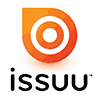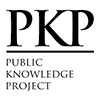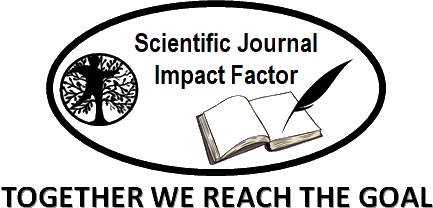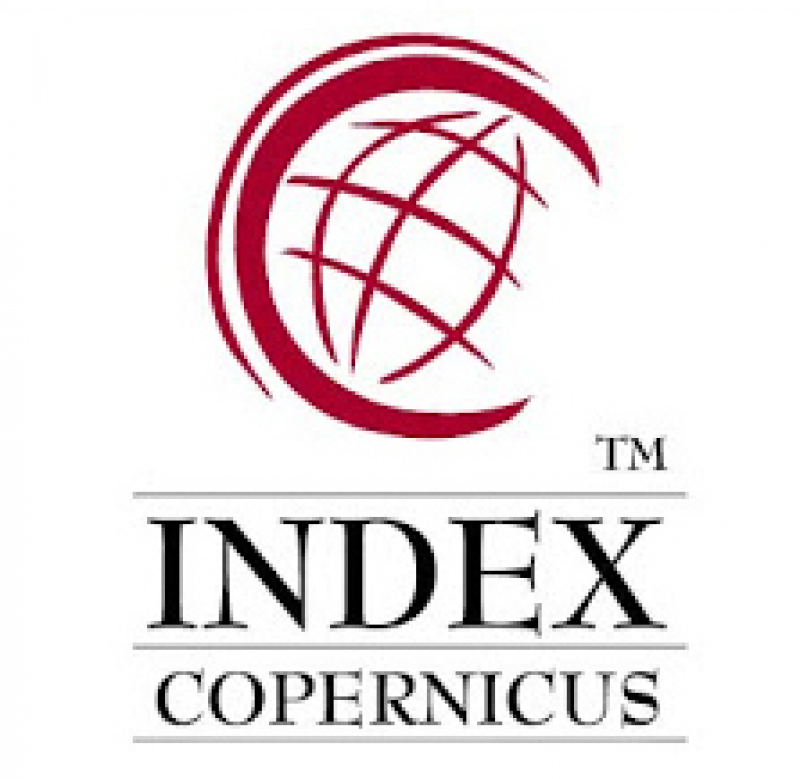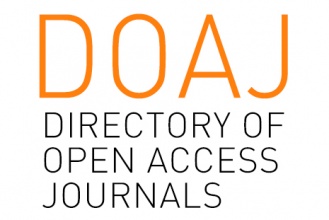A Study on the Relationship among EFL Students’ Self-esteem, Motivation, Attitude, and Speaking Performance: In the Case of Selected Secondary Schools in Addis Ababa City, Grade 11 in Focus
Abstract
This study used the Pearson-product moment to examine the relationship between the self-esteem, motivation, attitude, and speaking performance. 87 Ethiopian grade 11 students served as the sample population. The researcher employed self-esteem questionnaires that were modified from Rosenberg's (1979) work. Gardner's (1985) adaptation of the Attitude Motivation Test Battery served for the development of motivation and attitude surveys. Data were also acquired utilizing speaking tests. The analysis showed motivation, attitude, self-esteem, and speaking performance have a significant relationship. The correlation coefficient between speaking performance and attitude was found to be 0.828, with a P value of =0.000. The outcome showed that speaking performance and motivations had a relationship, with a significant value of 0.449. The result indicated that there was a significant relationship among self-esteem and speaking performance with a significant value of 0.384. Therefore, the results indicated that the null hypotheses were rejected and alternative hypotheses were accepted.
Keywords
Full Text:
PDFReferences
Aisyah, S. (2020). The Correlation between Students’ Self-Esteem and Students’ Speaking Ability of Eleventh Grade at SMAN 7 Maros (A Descriptive Research).
Amanuel, A. (2015). A Study on the Problems that Affect Students’ English Speaking Skill, Addis Ababa University.
Ananda, R. (2017). The Correlation between Students’ Self-Esteem and Students’ Speaking Skill of the Second Year Students at Sma Negeri 2 Bantaeng. Bachelor Thesis, Department of English Education, Alauddin State Islamic University of Makassar.
Ariyanti, (2016). Psychological factors affecting EFL students’ speaking performance. ASIAN TEFL, 1(1), 77-88.
Azizifar, A. (2014, Vol 8 (10)). EFL Adult learner's attitude towards learning to speak. International Research Journal of Applied Basics Sciences, 1755-1764.
Babby, L., & Hoffman, J.J. (2015). Motivation for learning and performance. Academic Press.
Brown, H. D. (1994). Teaching by Principles-An Interactive Approach to Language Pedagogy. Prentice Hall
Regents
Brown, H.D. (2000). Principles of language learning and teaching (4thed.). Longman.
Brown, H.D (2003). Language assessment; principles and classroom practices. California: Longman.
Brown, H.D. (2004). Language assessment: Principles and classroom practices. Pearson/Longman.
Carlson, M. (1999). Theatre semantics: Signs of life (2nded.). Indiana University Press
Chomsky, N. (1965). Aspects of the theory of syntax. Cambridge, Massachusetts: MIT Press.
Cohen, A.D. (2007).Coming to Terms with Language Learner Strategies: Surveying. The Experts. In Cohen, A.D., and Macaro, E. (Eds.), Language Learner Strategies: Thirty Years of Research and Practice, (pp. 29-46). Oxford: Oxford University Press.
Cohen, L., Manion, L., & Morrison, K. (2007). Research methods in education (6thed.). Routledge.
Coopersmith, S. (2007). The Antecedents of the Self-esteem. San Fransisco: Consulting Psychologists Press. Creswell, J. W. (2012). Educational research: Planning, conducting, evaluating quantitative and Qualitative research. Boston: Pearson Education.
Dörnyei, Z., & Csizér, K. (1998). Ten Commandments for Motivating Language Learners: Results of an empirical study. Language Teaching Research, 2, 203-229.Doi: 10.1177/136216889800200303.
Dörnyei, Z. (2001). Motivational strategies in the language classroom. Cambridge: Cambridg University Press.
Dörnyei, Z. and Ushioda, E. (2011). Teaching and researching motivation (Second Edition) Harlow: Pearson Education.
Dörnyei, Z. (2014). Motivation in second language learning. In M. Celce -Murcia, D.M. Brinton, & M.A. Snow (Eds.), Teaching English as a second or foreign language (4th edition, pp. 518-531). National Geographic Learning/Cengage Learning.
Frankel, J.R., & Wallen, N.E. (2009). How to design and evaluate research in education (7thed.). McGraw-Hill.
Fraenkel, J.R., & Wallen, N.E. (2012). How to design and evaluate research in education (8thed.). McGraw Hill.
Gardner. (1985). “Motivation in Second and Foreign Language Learning Language Teaching”. 31(03), 117-135. Retrieved on internet http://www.zoltandornyei.co.uk/uploads/1998-dornyei-lt.pdf
Gardner, R.C. (1985). Social psychology and second language learning: The role of attitudes and motivation. Edward Arnold.
Gardner, R.C., & Lalonde, R.N., & Moorcroft, R. (1985).The role of attitudes and motivation in Second language learning: Correlational and experimental considerations. Language Learning, 35 (2), 207-227
Gardner, R. C. and Lambert, W. E. (1972). Attitudes and motivation in second language learning. Rowley, MA: Newbury House.
Gustaman, W. W. (2015). The Correlation Between Students’ Self-Esteem and Their English Speaking Competencies (A Study of Eleventh Grade Students at a Public Senior High School in Cimahi). Journal of English and Education, 3(2), 121-137.
Harmer, J. (2007). The practice of English language teaching. UK: Longman.
Jenenew, B. (2006). Teachers’ and Students’ Role Implementation in EFL Speaking Classroom. (MA Thesis). Addis Ababa University
Kirli, M. (2019). The Correlation among Students’ Motivation and Self-esteem on Students’ Speaking Performance. Faculty of Education and Teacher Training the State of Islami University, Indonesia.
Krashen, S. 1981. Second Language Acquisition and Second Language Learning. Great Britain: A. Wheaton Co. Ltd.
Mitiku, T. (2021). The Relationship between EFL Students' Speaking Strategies Use and their Speaking Proficiency. Jimma University.
Newby, D. (2011). Competence and performance in learning and teaching: theories and practices. Papers on Theoretical and Applied Linguistics.
Noels, K. A. (2001). Learning Spanish as a second language: Learners' orientations and Perceptions of their teachers' communication style. Language Learning, 51(1), 107-144. Doi: 10.1111/0023- 8333.00149
Nunan, D. (1991). Language teaching methodology: A textbook for teachers (9thed.). Prentice Hall.
Nunan, D. (1996). Towards autonomous learning: Some theoretical, empirical and practical issues.
In R. Pemberton et al. (Eds.), Taking Control: Autonomy in Language Learning (pp. 14- 15). Hong Kong University Press.
Nunan, D. (1999). Second language teaching and learning. Heinle and Heinle.
Nunan, D. (2003). Practical English language teaching. McGraw-Hill. Nur Falah, R. (2022). The Correlation between Students' Self-esteem, and Their Speaking Ability: Syarif Hidayatullah State Islamic University Jakarta.
Oller, J. Language Tests at School, (1979), London: Longman
Omrod, J.E. (2011). Educational psychology: Developing learners (7thed.). Pearson.
Pintrich. P. & Schunk, D. (1996). Motivation in education. New Jersey, USA: The good language Teacher English Teaching Forum, 29, 2, 2-7
Pintrich, P. R. (2000). An achievement goal theory perspective on issues in motivation Terminology, theory, and research. Contemporary educational psychology, 25(1), 92-104.
Riantika, L.O (2021). The Correlation between Students’ Attitude in Learning English and Their Speaking Ability at the Eleventh Grade of Senior High School 1 Ukui by faculty of education and teacher training state Islamic University of Sultan Syarif Kasim Riau 1442 h.
Rosenberg, M. (1965). Society and the adolescent self-image. Princeton NJ: Princeton University Press.
Rosenberg, M. (1979). Conceiving the self. New York, NY: Basic Books.
Rubio, F. (2007). Self-esteem and foreign language learning: An introduction. In F. Rubio (Ed.),Sel esteem and foreign language learning (pp.2-12). New York: Cambridge University Press.
Sidik, A. 2013. Improving Students’ Speaking Ability through Practice Rehearsal Pair of the Tenth Grade of Man Malang 1. Cambridge University Press.
Tamene, K. (2000). Classroom verbal behavior and learning opportunities. Addis AbabaUniversity.
Taye, G. (2008). A Comparative Study of Televised and Non-Televised Speaking Skills Teaching Techniques. (MA Thesis). Addis Ababa University.
Taye, G. (2015). Effects of Cooperative Learning on EFL Students’ Speaking Skills at Tertiary Level. Addis Ababa University.
Vibulphol, J. (2016). Students' motivation and learning and teachers' motivational strategies in English classrooms in Thailand. English Language Teaching, 9(4), 64-75. Doi: 10.5539/elt.v9n4p64
Wakgari, H. G. (2022). The Matters That Hinder Students’ Motivation in Learning Speaking Skills in Haro. Journal of Positive School Psychology.
Woodrow, L. (2017). Motivation in language learning. In R. Breeze & C. Sancho Guinda (Eds.), Essential competencies for English medium university teaching (pp. 235-248). The Netherlands: Springer International Publishing.
DOI: http://dx.doi.org/10.18415/ijmmu.v12i1.6599
Refbacks
- There are currently no refbacks.
Copyright (c) 2025 International Journal of Multicultural and Multireligious Understanding

This work is licensed under a Creative Commons Attribution-NonCommercial-NoDerivatives 4.0 International License.
https://ijmmu.com
editor@ijmmu.com
facebook.com/ijmmu
Copyright © 2014-2018 IJMMU. All rights reserved.













